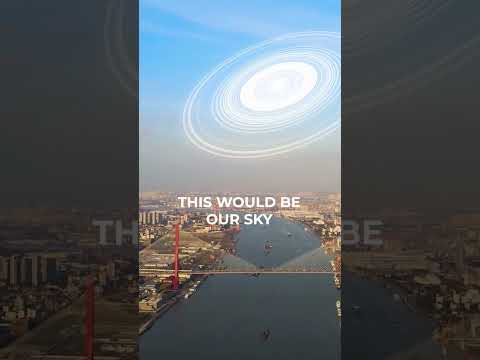
- Saturn now has 274 official moons, far surpassing any other planet.
- Dr. Edward Ashton and team discovered over 192 moons using “shifting and stacking” imaging techniques.
- Confirming a new moon requires months of tracking to prove it’s tied to Saturn’s gravity.
- The abundance of moons results from Saturn’s massive gravity and past collisions breaking apart larger bodies.
- Many moons remain unnamed until further confirmation.
- Future telescopes like the Nancy Grace Roman Space Telescope may reveal dozens more Saturnian moons.
- Each discovery reveals clues about planetary formation and cosmic history.
Above the swirling clouds and iconic rings of Saturn stretches a crowded celestial ballroom, now known to host an astonishing 274 official moons. These icy wanderers—some no wider than a city block—circle the gas giant in silent, intricate patterns, their numbers dwarfing those of any other planet in our solar system. Not so long ago, Saturn’s count sat at a mere 62, but an astronomical detective story has re-written the records and deepened the mysteries of our cosmic backyard.
Among the hunters of Saturn’s elusive satellites stands Dr. Edward Ashton, whose curiosity pulled him toward the faint glimmers orbiting far past Saturn’s luminous rings. Today a postdoctoral fellow at the Academia Sinica Institute of Astronomy and Astrophysics in Taiwan, Ashton has helped claim discovery rights to more than 192 Saturnian moons. “You sort of lose track,” he admits, eyes flickering in calculation, evidence of just how dizzying the search has become.
The breakthrough came with an ingenious method: shifting and stacking. Using the sharp vision of the Canada-France-Hawaii Telescope (CFHT), Ashton and his team methodically gathered images—44 in sequence across three hours. Each tiny moon moves delicately, tracing a subtle path against the backdrop of distant stars. Stacking these images without adjustment would leave only faint streaks, the evidence smeared away. Instead, astronomers shift images to account for the moons’ drift, blinking through possibilities until an elusive dot—just brighter than the black—emerges. “When you nail the rate,” Ashton explains, “the moon appears, sharp as a pinpoint.”
- One night yields a candidate: a barely-there point of light moving as Saturn moves.
- Long months of follow-up: To truly claim a moon, the faint object must be tracked across orbits, confirmed as tethered by Saturn’s gravity.
- Diminishing returns: Each search reveals fewer new moons—but better telescopes may tip the odds again.
Why is Saturn so crowded? The answer, researchers say, may lie in its heft and in cosmic violence. Saturn’s vast gravitational sphere shelters more space where moons can survive in stable dance. When collisions shatter larger moons, fragments scatter into smaller, eccentric paths. With each survey, researchers spot clusters of orbits—clues to ancient moon-breakups, written across the night in patterns only visible to the determined.
Discoveries come with tantalizing frustration. Most moons, Ashton notes, remain anonymous except for a sterile number. True names await further observation and confirmation—tedious, years-long work essential for scientific rigor. And while the current pace has slowed, a new generation of telescopes spurs hope. The soon-to-launch Nancy Grace Roman Space Telescope promises a field of view ready-made to comb the vast reaches of Saturn’s realm, perhaps unveiling dozens more hidden gems.
For now, the mystery holds. With orbits mapped and brightness measured, each moon offers just a shimmering whisper of a past catastrophe or a glimpse at planetary formation. Dr. Ashton, taking a momentary break from moon-chasing, turns instead toward trans-Neptunian objects, where secrets linger even farther out. These discoveries may yet reshape how we see the evolving architecture of our solar system.
So, as Saturn’s moons multiply, their crowded ballet continues unseen—until technology sharpens, patience endures, and the invisible is made visible. The hunt for lost moons persists, a testament to human ingenuity and the wild storerooms of our planetary giant.
You Won’t Believe What’s Hiding in Saturn’s Orbital Dance: The Surprising Downsides of Finding 274 Moons!
-
Pros:
-
Dramatic advances in observation techniques—such as the “shifting and stacking” method—now let astronomers using the Canada-France-Hawaii Telescope and other instruments spot moons invisible just years ago.
-
Expanding Saturn’s moon count to 274 deepens our understanding of Saturn’s formation, gravitational dynamics, and the history of cosmic collisions in our solar system.
-
The promise of new discoveries looms with next-generation telescopes like the Nancy Grace Roman Space Telescope, which could unveil more hidden satellites.
-
-
Cons & Limitations:
-
The smallest moons—some barely the size of a city block—blur the line between moon, captured rock, and debris, raising debate over what truly counts as an “official” satellite.
-
Confirming each moon’s orbit requires months or even years of follow-up—a time-consuming and resource-intensive process, delaying official naming and characterization.
-
Diminishing returns: As more moons are discovered, each new search turns up fewer unique finds; researchers risk hitting technological or physical detection limits even with improved equipment.
-
-
Controversies:
-
Many tiny moon candidates remain nameless, known only by numbers until lengthy confirmation—frustrating to both scientists and the public eager for discovery stories from Academia Sinica Institute of Astronomy and Astrophysics and collaborators worldwide.
-
Ongoing debate in the astronomy community about the strict criteria for moon classification and the “ownership” of discoveries (who claims which moon first) continues to spark heated discussions.
-
Saturn’s Moons: What’s Next? Discover the Future That Could Re-write Solar System Records!
-
Breakthrough Telescope Technology:
With advanced observatories like the Nancy Grace Roman Space Telescope nearing launch, astronomers anticipate a surge of new moon discoveries. Wider fields of view and sharper sensitivity will enable detection of even fainter and smaller satellites previously invisible to ground-based telescopes.
-
Ongoing Automated Sky Surveys:
Facilities such as the Canada-France-Hawaii Telescope are continuously refining data-processing techniques like “shifting and stacking.” In the next few years, automated algorithms and AI-powered search tools will likely accelerate the identification and confirmation of tiny Saturnian moons.
-
Record-Breaking Moon Counts:
As improved optics and smarter software take hold, experts expect Saturn’s official moon tally to climb beyond the current 274. Some estimates suggest dozens—or even hundreds—of additional minor moons could be cataloged by the end of the decade.
-
New Naming Initiatives:
Most newly discovered moons are currently only numbered. Agencies like NASA and the Academia Sinica Institute of Astronomy and Astrophysics are expected to launch public naming campaigns and involve communities worldwide in the excitement of classifying Saturn’s ever-expanding family.
-
Solar System Evolution Insights:
Researchers will continue to use moon clustering patterns and orbital dynamics to unlock the history of planetary collisions and formation. Saturn’s moons are on track to transform our understanding of how giant planets and their satellite systems evolve over cosmic timescales.
-
Beyond Saturn—A Gateway to Distant Discoveries:
The methods honed around Saturn’s moons are being adapted to hunt for even more elusive objects, such as trans-Neptunian bodies. Insights from Saturn’s crowded orbits will inform the search for new worlds and icy fragments throughout the solar system.
In short: The next years promise a golden era for moon hunting, with Saturn at the center stage of astronomical breakthroughs. Stay tuned for unprecedented discoveries—and perhaps history-making surprises—soon to be revealed through missions and telescopes at NASA and beyond!
This post Saturn’s Secret Swarm: How Scientists Uncovered 274 Moons Dancing Around the Ringed Giant appeared first on Macho Levante.

A cybersecurity specialist with a passion for blockchain technology, Irene L. Rodriguez focuses on the intersection of privacy, security, and decentralized networks. Her writing empowers readers to navigate the crypto world safely, covering everything from wallet security to protocol vulnerabilities. Irene also consults for several blockchain security firms.









